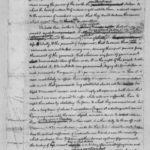Frederick Douglass earned wide renown as an outspoken and eloquent critic of the institution of slavery. In this speech before a sizeable audience of New York abolitionists, Douglass reminds them that the Fourth of July, though a day of celebration for white Americans, was still a day of mourning for slaves and former slaves like himself, because they were reminded of the unfulfilled promise of equal liberty for all in the Declaration of Independence.
What to the Slave is the Fourth of July?
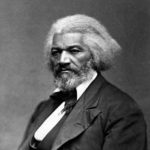
Students are guided through a careful reading of Frederick Douglass’ greatest speech in which he both praises the founders and their principles, yet condemns the continued existence of slavery. The Constitution is presented as a “glorious liberty document” which, if properly interpreted, is completely anti-slavery. Douglass delivered this speech on July 5, 1852 at the height of the controversy over the Fugitive Slave law. The speech is generally considered his greatest and one of the greatest speeches of the 19th century. Before you read the speech you can follow links to learn more about Douglass’s life and the evolution of his thought in this period.
Founding Documents: Declaration of Independence Podcast
America declared independence on July 2, 1776. But two days later, it adopted this radical, revolutionary, inclusive, exclusive, secessionist, compromising, hypocritical, inspirational document. What does it say? What does it ignore? This episode features many scholars with differing opinions on the Declaration: Danielle Allen, Byron Williams, Cheryl Cook-Kallio, Woody Holton, and Emma Bray.
This short episode includes a one-page Graphic Organizer for students to take notes on while listening, as well as discussion questions on the back side.
What Does July 4th Mean to You?
Celebrating the Founders
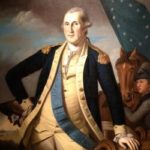
This short video explores why Americans celebrate the Founding generation. Americans point to a “founding moment” and, from the country’s earliest days, celebrated this “moment” on July 4. The first individuals to be honored were military leaders like George Washington; later, individuals who created the nation’s government were celebrated. Professor Daniel Dreisbach draws parallels between the commemoration of Washington as “Father” of the country and Moses as “Father” of the Hebrew nation.
Constitution of the United States with Index and the Declaration of Independence, Pocket Edition
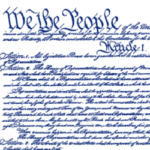
This is the 25th pocket edition of the complete text of two core documents of American democracy, the Constitution of the United States (with amendments) and the Declaration of Independence. The resolution calling for the ratification of Constitutional Convention is also included. A topical index to the Constitution is provided. (House Document 112-29, 2012)
Independence Day Lesson Plans & Resources

On July 4 each year, the United States celebrates Independence Day. This day commemorates the signing of the Declaration of Independence on July 4, 1776, in which citizens of the thirteen American colonies announced their break from the British Empire and their intention to form a new nation: the United States of America. This Share My Lesson collection provides educators with free preK-12 lesson plans, activities, and materials to use to teach their students about Independence Day.
The Influence of the Declaration of Independence on the Constitution
In this lesson, students will use C-SPAN video clips to examine the founding principles that emerged from the Constitutional Convention as well as hear about some of the people who participated. Students will use this information to analyze the role the compromise played in the creation of the Constitution.
The Declaration of Independence: From Rough Draft to Proclamation
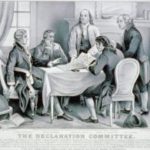
Students will analyze an unidentified historical document and draw conclusions about what this document was for, who created it, and why. After the document is identified as Thomas Jefferson’s “original Rough draught” of the Declaration of Independence, students will compare its text to that of the final document adopted by Congress on July 4, 1776 and discuss the significance of differences in wording.
Prequel to Independence
In this activity, students sequence key events leading to the Declaration of Independence by placing documents in chronological order.
